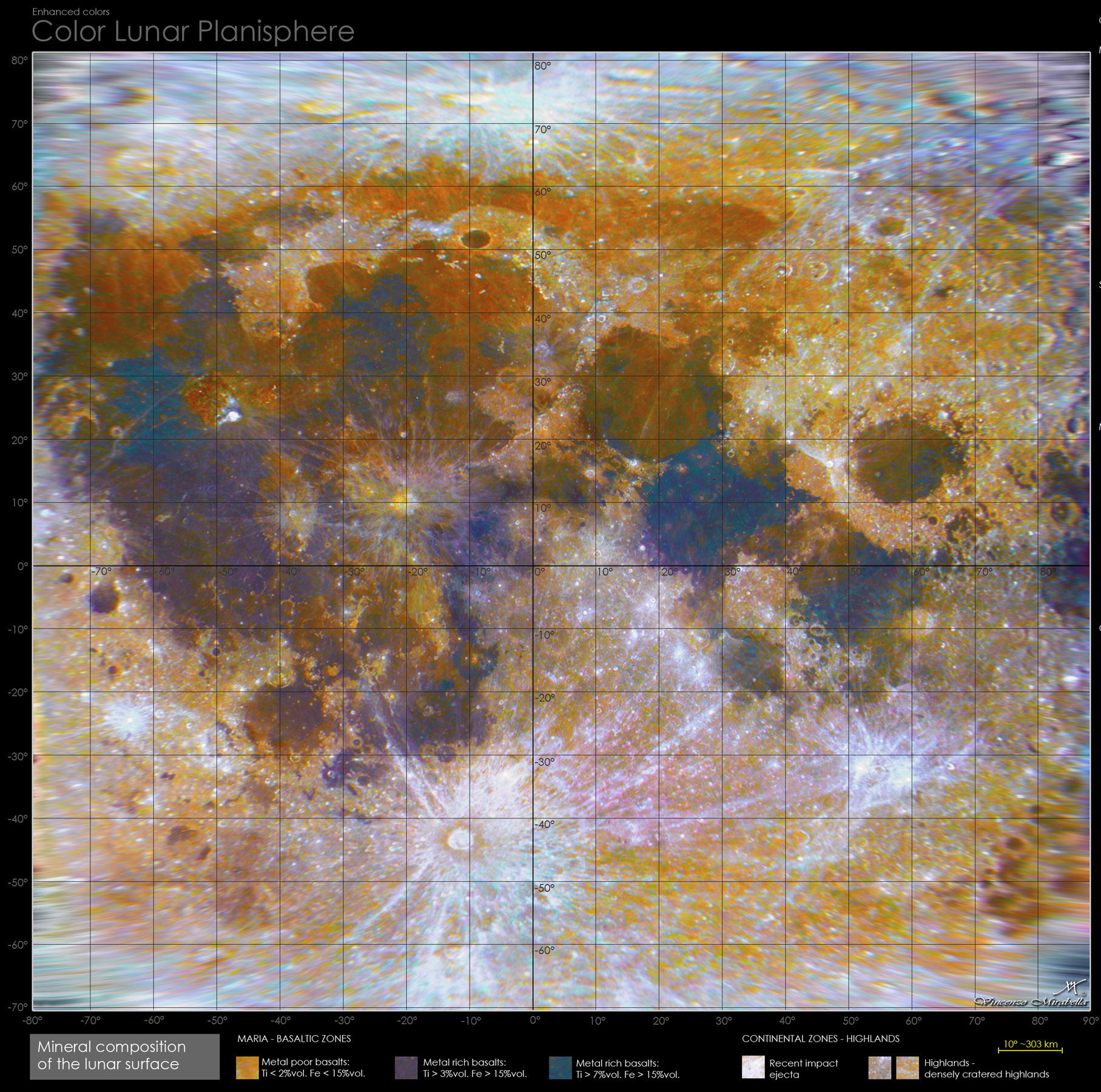May 17, 2014
Color Mapping

image by Vincenzo Mirabella, Ardea (RM) Italy
It is no longer a surprise to see an exaggerated color image of the Moon, but Vincenzo has gone beyond that to reprojecting his telescopic image to a Mercator type view, adding coordinates, and providing a calibration for soil chemistry. He labels the bright white material Recent Impact Ejecta which is the ray material from Tycho and many other young impact craters. But notice that rays from Copernicus, Kepler and Aristarchus are not as bright, perhaps those craters are all older than the bright ray craters. I notice however that craters on the highlands have whiter rays than the few on the maria. Tycho, the Stevinus headlights, and Glushko are indeed younger than the Copernicus etc craters, but I don't know if all the bright rayed crater near the south pole are. Separation of mare basalts into high, low and very low amounts of titanium is accurately done with filtered and corrected images, but reasonable distinctions can occur in enhanced color images such as this one. It is a shame that the highlands seem to have little difference in color and hence chemistry accept for variations in the amount of ray material. Perhaps the highlands are so covered by ejecta from all the basins and craters so that they have a homogenized color, whereas the maria, with their very thin (10 m) mixed regolith reveal their strong chemical differences.
Chuck Wood
Technical Details
2013-11-17, 18:45 U.T. Celestron C925 Edge HD a f/10 on Celestron CGEM + Canon EOS 550D camera (ISO: 400, 1/1250 sec.). Mosaic of 11 images each consisting of the sum of 4 to 8 RAW files with IRIS
Yesterday's LPOD: A Paleo-Equator?
Tomorrow's LPOD: Deep Floors
COMMENTS?
Register, Log in, and join in the comments.



